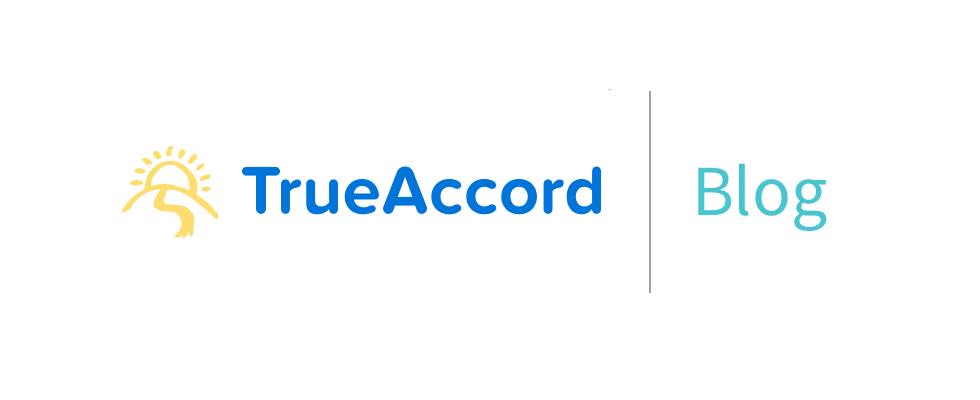Lavallee v. Med-1 Solutions Confirms Common Sense Email Principles
On August 8, 2019, the Seventh Circuit Court of Appeals (7th Cir.) released its long-awaited verdict in the case of Lavallee v. Med-1 Solutions, LLC, 17-3244 (7th Cir. Aug. 8, 2019). The court ruled that Med-1 Solutions, LLC did not properly provide the validation notice as required by the Fair Debt Collection Practices Act. Additionally, the court held that the first email Med-1 Solutions, LLC sent did not constitute a debt collection communication. Despite the unsuccessful method by which Med-1 attempted to email the initial communication, it is possible to do so in a compliant manner consistent with the current interpretation of the FDCPA. The court’s decision The Court held that Med-1 Solutions, LLC did not properly deliver the validation notice to the consumer. Med-1 sent the Plaintiff an email, but the email did not contain the text of the validation notice. Instead, the email contained a hyperlink to a page where the Plaintiff would have had to enter personal information, and then take four additional steps in order to open a PDF containing the full initial demand letter with the required validation notice language. The Court reasoned that Med-1’s email did not constitute a communication because the email did not have any content relating to a debt. The Seventh Circuit reasoned that the “email conveyed three pieces of information: The sender’s name (Med-1 Solutions, LLC)Its email addressThe fact that it 'has sent … a secure message.' ” The email did not convey any information about the debt so it did not constitute a communication. The FDCPA requires debt collectors to provide the validation notice in the initial communication or within 5 days of the initial communication in writing. Since the email did not constitute an initial communication, the Court found the initial communication happened over the phone. Med-1 Solutions, LLC, however, did not provide the validation notice during that call or in writing within 5 days because the company believed that their email satisfied the requirement. How to provide a validation notice in initial communication via email When sending an initial communication by email, the content in the body of that email must contain all the validation notice requirements (15 USC § 1692g). It should: Identify current creditorState the amount owedProvide the validation statement explaining the customer's dispute rights With the right information provided in the initial communication customer's are more likely to recognize the account and trust that the email is from a legitimate debt collector. It should contain information on: How to unsubscribe from future emailsTelephone contact informationThe business' hours of operation Beyond that, it should comply with any other state, federal, or local obligations such as whether or not to provide a disclosure or other information. These are some of the principals embraced in the CFPB’s proposed debt collection rule. Had Med-1’s email contained this information in the body of the email, the result in the case would have been different. Limited content emails The Seventh Circuit’s decision also highlights a concern with sending limited content communications via email. This case reinforces the importance of developing an email strategy and fully understanding deliverability requirements. This can ensure emails are delivered and not identified as spam and filtered away from a recipient's view. A full deliverability strategy may consider several factors including, but not limited to ISP reputation, providing relevant content in the body of the email, and more technical aspects of email such as throttling, bounces, and bulking. These elements can greatly affect an email's ability to reach its intended recipient and ultimately convey its message. Med-1 Solutions, LLC did not have a prior relationship with the Plaintiff, they did not remember receiving the email, and they did not click on the hyperlink provided in the email. As the lower court noted in its decision, the Department of Homeland Security warns consumers from clicking on links received in emails from unknown senders. The Seventh Circuit decision showcases the ineffectiveness of using a limited content message to reach and engage a consumer. TrueAccord and the future of digital debt collection We work to create a digital environment that places customer experience at the forefront of our collections strategy. This means ensuring not only personalized content delivered through our machine learning technology, flexible payment options, and digital access for customers to manage their debts. We do all of this via software that guarantees compliance. If you want to learn more about how our technology can change your strategy, reach out to our team here!
TrueAccord and the Future of Digital Debt Collection
In January 2019, AccountsRecovery.net launched a survey of more than 100 companies in the credit and collections industry to “assess the penetration of digital communication tools and how much they are being used in the industry.” “Digital communication” includes channels such as email, text messaging, and web portals that work to reach to consumers. However, these channels are secondary to outbound calls and paper mail, practices that have remained unchanged for decades, even though 70% of companies believe that digital communications have had a moderate to significant impact on their collection rates! Updating these channels for the modern age can improve the collections experience for both the customer and collector. Let’s find out how! Communication Channels Email According to the AccountsRecovery survey, more than half of the companies that took part in the survey are using email communication. A majority of respondents also said that they are sending emails to or receiving emails from fewer than 20% of their users. This means that 80% or more of their customers are regularly receiving calls from collectors to discuss resolving their debts rather than receiving digital communications. According to TrueAccord’s 2018 consumer survey, the majority of consumers using our site would rather resolve their debts online than through other channels. With such a large number of consumers interested in online engagement, it’s easy to see why we’ve leveraged digital channels to modernize the collections industry. We use email communication as our primary form of contact at every stage of the customer lifecycle, and each message is customized for the individual. Mobile and Text Messages The prevalence of smartphones has made reaching out to users on their mobile devices an effective and essential channel for communicating with customers. Unfortunately, only 21.6% of collection companies are actively using text messaging as part of their outreach strategy! Even some of the largest agencies in the industry are only texting about ¼ of their customers. More than 65% of companies in the collections space that are not currently using text messaging as a channel are concerned about two things: a fear of being sued or not fully understanding what is and is not allowed of them. TrueAccord has taken steps to directly address these issues by hard-coding compliance parameters directly into our system, so we are able to securely reach our users where they are: on their phones. In fact, more than 85% of our web traffic comes from smartphones and tablets, and we are able to drive traffic to the right pages through push notifications on those devices. These notifications serve the same purpose as text messaging but are uniquely catered to that specific customer’s needs. Web Portals Portals and landing pages created for consumers should be exactly that: designed with them in mind. The vast majority of companies in the collections space have portals specifically designed for customers to manage their accounts, but 75% of those companies report remarkably low engagement through those pages. Creating an engaging portal means answering the question: “How can we make the experience personalized for the customer?” TrueAccord embraces this in its design methodology; Shannon Brown, TrueAccord’s Product Design Manager, says that “we’re not pushing offers to them, we’re looking for information [about the nature of their debt] to customize for their needs.” Our design embraces our mission of giving consumer’s control of their financial health. You can learn all about TrueAccord’s design philosophy by listening to our full interview with Shannon here! By focusing on developing interconnected, customized content that reaches users through multiple channels, we can reach consumers via email and mobile push notifications with the goal of bringing them back to our website. The debt collection industry at large has a long way to go to meet consumer expectations about financial services. Our machine learning algorithm optimizes which message to a customer to send on what channel, addressing those expectations and letting users manage their debt at their own pace. This is also why we work to provide our users with as much visibility into their debt as possible through easily accessible digital channels.
TrueAccord & CB Insights: Future of Fintech 2019
https://www.youtube.com/watch?v=kNh3zrpNnso&feature=youtu.be Ohad Samet, TrueAccord’s co-founder and CEO, joined thought leaders in fintech at CB Insight’s Future of Fintech 2019 conference. Learn everything you need to know about how TrueAccord is reinventing the collection experience. TrueAccord is dedicated to revolutionizing the debt collection industry by redefining the user experience for consumers in debt collection. We work to empower consumers to regain control of their financial health and help them to better manage their financial future. Our product leverages machine learning for intelligent digital communications and empathy driven UX interfaces. The Debt Collection Market Debt collection is an enormous market with nearly $13 billion in annual industry revenue. In the US alone, that equates to more than 17 million consumers per year who are impacted. These consumers are primarily pushed to provide payment by call centers which employ collectors —low-base, high-commission employees—who can contact a consumer to no end. Incessant contact from these collectors, whose own income is contingent upon collecting debts, can lead to anything from a rising number of complaints to the federal government to consumers exhibiting PTSD-like symptoms that are a direct result of feeling hunted by their collectors. The Future of Collections To combat this, we reimagine the collections experience. That difference comes from placing the consumer at the forefront of our collections strategy; the consumer is given the choice to engage with TrueAccord’s personalized, digital solutions at their own pace. This strategy empowers consumers to manage their debts in a way that makes sense for them and ultimately affords high customer satisfaction, whereby consumers feel that a weight has been lifted from them when they pay off their debt through TrueAccord. Machine Learning By automating collections communications, we are able to craft a more personalized experience for our users. With over 6 million users on the platform, we use the aggregate data to better understand what makes each of those users distinct and how to best communicate with each individual that we service. The learning aspect of the platform continues beyond simple understanding; it makes our communication strategies more dynamic and can cater our content and outreach to each user. User Experience For TrueAccord, providing a positive user experience means being transparent and giving consumers the options they come to expect across other financial services. This is best represented by the fact that more than 80% of consumers on the platform are managing their account on mobile devices, not on the phone with agents. A positive user experience is just as necessary for TrueAccord’s creditor partners which have direct access and visibility into the inbound and outbound activity related to their debts as well as the amounts collected. Rules, Regulations, and Refreshing the Model Samet recently served as a member of the Consumer Advisory Board of the Consumer Financial Protection Bureau (CFPB) to assist in reviewing current collections rules and regulations using TrueAccord’s data. The CFPB is currently developing legislation that promotes our model; this legislation will severely restrict call center-based collections and will encourage adoption of digital channels instead. With TrueAccord leading these changes, we aim to continue our rapid growth by setting industry standards and making debt collection a more empathetic experience.
AI in Banking podcast: Machine Learning for Debt Collection and Personalized Messaging with Ohad Samet of TrueAccord
The latest AI in Banking podcast features our CEO Ohad Samet as he talks about personalized messaging, collection forecasting, as well as his thoughts on branding and customer retention. https://soundcloud.com/aiinbanking/machine-learning-for-debt
5 Financial Steps to Take When Setting Up Your B2C Business
Establishing a consumer-facing business involves a wide range of steps, which include creating products and services that customers need. There are also essential “behind the scenes” decisions you need to ensure solid financial management of your company. #1: Establish Payment Options There are many ways you can allow your customers to pay you. However, you need to set up accounts to allow you to accept most transactions. Think beyond the basics here. For example, do you wish to offer our customers a way to use automated payments? Perhaps you would like to set up tap and go type payments. Research your potential customers and their preferred payment methods, whether that’s online and/or in person. #2: Get Taxes in Line Now Establish a method for collecting and managing your business's taxes. Do not overlook the importance of having an experienced professional managing the books, so hire an accountant and a bookkeeper to manage your financials for you. A professional can help you navigate through and stay up to date on the complexities of state-specific and federal tax regulations. #3: Establish Payment Requirements In most business to consumer situations, you’ll require payment at the time of service. However, many companies give credit both in-house and through third party providers. It is important for you to establish any payment requirements, such as how much is due, when it is due, and what happens if nonpayment occurs. #4: Make Payment Easy Having a web portal or an app to properly manage the payment process is a critical factor for most business owners. If you do not have a way for customers to make payments on their account online, you are missing out on a large portion of buyers. Vendors like Square, Stripe and Klarna make it easy for you to accept credit card payments online, and some, including Square and Klarna, as well as Afterpay and Affirm, allow consumers to pay installments over time. #5: Establish a Collections Plan Although you may not want to think about it, this is a common situation and need in today’s business world. Define what this needs to be—who will handle it, what type of collections activity you will use, and when accounts go into collections. You also want to facilitate a way for your customers to pay for their fees, if applicable. This doesn’t have to be resource-intensive nor hard to do with the right partner. That’s why at TrueAccord, our debt collection platform empowers businesses to easily place their accounts with us and recoup charged off losses.
Customer Satisfaction in the Collections Industry
It’s not easy to make customers happy when you are trying to collect a debt from them, but customer satisfaction is an important component when servicing consumers, even in debt collection. Low customer satisfaction reduces collection rates, increases complaints, and adds to legal exposure. The old days of hitting consumers over the head, metaphorically, with aggressive phone calls is over. There are a few key ways you can turn around customer satisfaction in your collections business to see better results. Why Is Consumer Satisfaction So Low? Within the collections industry, most consumers are angry, frustrated, and even downright unhappy with the service they get from collections companies. Initially, this can seem that these individuals just do not want to pay the bill. Yet, more than often, it is the result of being unable to communicate their needs. Or, they feel as though the person on the other line isn’t listening to them. Sometimes, repetitive phone calls or a lack of information between two parties calling the customer leads to this type of turmoil. Pitting collectors with aggressive quotas against consumers in debt isn't helping, either - and evidently, most compliance violations and complaints come in at the end of the month, when collectors are most stressed out. First, Consider What’s Happening Around Them You cannot make excuses for your customers. You cannot look the other way because they are having a financially tough month. However, it is important to understand what is happening around the customer that could be making hardship difficult. For example, are they struggling due to economic factors in their community or the country as a whole? Understanding why they are where they are can be valuable in helping you to offer a solution that fits their situation. Improve Your Platform Are you using the latest technology and resources to help you connect and remain connected with your customers? It is very common to find yourself unable to provide for the needs of the consumer if you have not done this. And, this can help to improve not just how satisfied your customers are, but also the company’s bottom line. For example, are you able to offer a customized collection process that fits the needs and the behaviors of your clients? Do you need to update your solutions so you can allow your customers more flexibility, more insight, or even the ability to make a payment online? Does your system limit the amount of information that can be shared between parties, making it hard for you to meet your customer’s goals of being able to speak to someone who understands their situation every time? What could more data do to help improve your business and give your team better insight into your customers? Take the time to consider what changes could help improve customer satisfaction within your organization. In many situations, making a change in the way you empathize with your customers as well as understand their needs, can help to improve the experiences you are having. Learn more about the options and opportunities available to you today. When you do, you are sure to find a wide range of opportunities available to make small improvements that can create a better outcome for every customer.
Why Digital Collections Is the Future
Has your organization made the move to digital? It’s one of the most important transitions you can make today within any business and any industry. In the collections industry, digitalizing your company means a lot of change in the way you do things, but also in the tools, you can provide. You may understand what digital collections mean for your business – it means more data and more managed control over your operations. What does it mean for your customers, then? Your Customers Want a Digital Collection Agency Be realistic here. How much money do you spend having people call and speak to voicemail? How many frustrating conversations happen that could be resolved with just a bit of a better method to improve communication? One of the things today’s consumers want is the ability to be reached digitally. How many of your customers appreciate threatening phone calls? Even if you consider how valuable this type of conversation can be, you know it doesn’t always lead to results. Now, think about your consumer a bit closer. You have a large and growing base of millennials, in most cases. This group of people uses phones for anything they can handle online. Imagine, for a moment, the millennial. With money in his pocket, he is able to make a payment. Then he finds out he needs to write a check and mail it. Or, the person on the phone wants routing numbers and account numbers. Most millennials don’t have these on hand to simply offer. That person simply doesn’t make the payment because making the payment isn’t easy to do. What Does This Mean for Your Organization? In short, by making a few key changes, you can learn to communicate more fully with your customer base. First, allow them to have numerous ways to connect with your company. This includes making payments online, but may also mean using chatbots as well as text messaging for communication. You also want them to be able to handle all of these transactions and needs on their mobile phone – do not rely on them to make time while they are on their phone. Also, consider the importance of building more empathy into your collections efforts. Having an empathy-based collection outreach program ensures you are providing your customers with respect and dignity. Many customers do not respect threats. They do not respond well to them, especially millennials. However, they are more willing to have a short conversation, talk about themselves and their needs, and to produce results for you. This type of approach benefits your customer but also your business. It does not have to be difficult to make the switch to a digital collections system. Rather, simply invest the time in learning more about the ways you can improve the methods of communication you offer to your customer base. You may also want to consider the opportunities you have for creating an outreach program that helps to ensure your collections business is working for your customer.
Building Our Email Prioritization Algorithm
We use machine learning in many ways - to automate our contact strategy, to optimize our offer strategy, and to automate processes. In this podcast, our senior data scientist Aviv Peretz and senior manager of data Sophie Benbenek talk about one example: an algorithm that uses a combination of debt and semantic features to classify and respond to emails we get from consumers.
How to Talk to Customers in Default the Right Way
Business owners and CEOs live and die by top-line growth. Acquiring customers, hitting scale and paying attention to unit economics are all actions that lead to positive cash flow and sustainable business growth. On the other hand, focusing obsessively on your top line and acquisition, while often correct, can leave a lot to be desired on the back end. Read more from TrueAccord on Entrepreneur.com.
How TrueAccord came to be and what’s in store for 2019
Our CEO, Ohad Samet, spoke to Tearsheet's Zack Miller about our origin, differentiation, and our priorities for 2019 and beyond. You can listen to the interview on Soundcloud.
Get started right now.
Whatever your organization’s technical needs, we have the tools and experts to onboard you today.
Get Started





